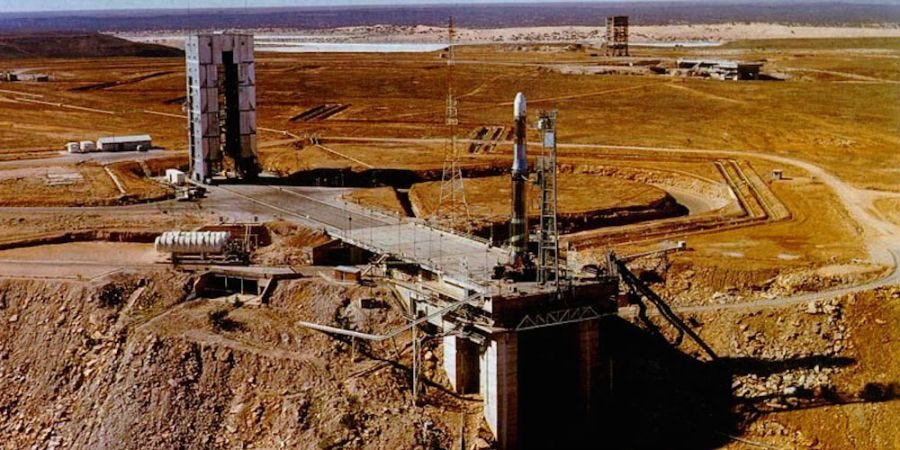Last night the 2018 Australian federal budget was announced by treasurer Scott Morrison, where over $300 million was allocated to developing the local space industry, including the formation of a new space agency tipped to be led by ex-CSIRO Chief Executive, Megan Clark AC.
This is a huge signal that Australia is open for business when it comes to the booming commercial space sector.
A break down of funding is as follows:
- $26m space agency seed funding for 4 years
- $15m space investment project
- $260m to develop world-leading core satellite infrastructure and technologies
An Australian Space Agency: Take Two
This news signifies that the last OECD nation to build a space agency has finally caught up. But this isn’t the first foray by Australia into the global space community.
Australia was one of the leading nations participating in the space race in the mid-20th century. Just 7 years after the Soviet Union successfully demonstrated humanity’s first “man-made moon”, a group of students from the University of Melbourne started building Australia’s first satellite, Australis OSCAR 5. This satellite was initially destined to be launched by the US Air Force in 1966, but due to internal US politics regarding the jurisdiction of space, the historical satellite (which is still hurtling back towards the earth today) was eventually launched by NASA for free in 1970.
In the mean time, the Australian government, via what is today known as the Defence Science Technology Group (DST Group), funded WRESAT. It was constructed from a spare US Redstone rocket, and was successfully launched from Woomera in South Australia into a very low orbit where it lasted for 2 months before re-entering the atmosphere.
WRESAT secured Australia’s place as the third nation to design and launch a satellite into orbit from its own land.
The Woomera Rocket Range, where WRESAT was launched from, was originally built in the 1947 as a base for the UK to develop rocket technology, in response to the German rocket developments. This facility paved the way for Australia to act as a productive member of the global space research community, and the nation became an associate member of the European Launcher Development Organisation (ELDO), lending the use of Woomera for the development of the Europa rocket.
In 1975, the ELDO merged with the European Space Research Organisation, to form the European Space Agency (ESA). ESA indicated to both the UK and to Australia that they could become full members of the new international organisation in 1977, but Australia decided not to pursue this.
Some saw this as the end of Australia’s involvement in space activity, but there was still a lot of activity between then and now, even if only with a partial commitment.
More recently, in the 1980’s, Australia built an Australian Space Office in an attempt to coordinate national space strategy. Ultimately, the office was within the Department of Industry, Technology and Commerce, and it did not have the power to fill the role of an international agency. In 1996 funding for the office was terminated.

Australia’s extensive space history, and bright future
Australia has an extensive space history that goes far beyond the scope of this article to detail. What is exciting now is that Australia has committed to building a real space agency.
While some might feel that the initial funding is small, It’s important to remember that this is seed funding. The space industry today is vastly different to even last decade, let alone 50 years ago. If the government were to have developed a detailed plan for a multi-hundred-million dollar agency, such as an exact replica of the UK Space Agency which we will surely take inspiration from, it would fail immediately.
A replica of any other space agency or a rushed plan would not work for Australia, and does not work for the modern commercially led industry. Agencies such as NASA are unsure how to handle the sudden and unexpected ability for private enterprise to utilise space to create commercial value through their access and use of low earth orbit, and companies such as SpaceX, Boeing, Lockheed Martin, and Blue Origin are all talking about going as far as Mars already.

NASA’s role as a government agency is not to compete with private enterprise, but to facilitate and enable it through valuable research that is not viable for private funding. Hence, the discussions around the continued funding of the International Space Station and the debate around the value of the Space Launch System.
An Australian space agency needs to be built like a startup — a startup agency for a new world. It needs to start small, measure incremental impacts, learn from small mistakes, and fine tune as it grows. It will take a few years to develop a good agency and to find a suitable model for a lean space agency for the 21st century. Once this period of agency development is complete, I expect we will see slightly larger budgets, although it will always remain ecosystem focused rather than attempt to be all encompassing.
Embracing the democratisation of space
Some people are unhappy that the news of the Australian space agency doesn’t inspire, such as with plans for astronaut programs and trips by rovers to Mars. But today is a time where astronaut programs are about to transition from the role of only well funded governments and into the hands of inspirational private enterprise. Startups are looking to develop commercial rovers that will go to Mars and mine water ice, turning it into oxygen and methane to fuel rockets that may visit and make a return trip to Earth.
The inspiring aspects of space are being democratised through commercialisation. In Australia today, we have companies such as Fleet Space who are developing next-generation satellites to provide internet access for farmers around the world, Gilmour Space Technologies are building rockets to address an emerging market for people looking to use low earth orbit, and Neumann Space are building electric ion thrusters — this isn’t science fiction, it’s a real Australian company inventing your sci-fi dreams.

Elsewhere around the world there are new companies such as Axiom Space, who are building real commercial space stations. They’re targeting other businesses that are looking to use space for research and development and even manufacturing — if you can build a satellite in space, it will be much cheaper to launch the components tightly packed together than to launch it as a full satellite from the ground. This is where astronauts come back into the picture — we’re going to need people to operate these commercial space stations, and you won’t need to have 3 PhDs and speak 3 languages fluently.
If you are a child now dreaming of one day working in space, it’s much more of a possibility than it was 10 years ago.
This opportunity has now come to Australia.
What Australia’s space future looks like
In 2015, before the federal government were interested in the Australian space industry, there were already 40 space startups across the land. I identified 4 major factors preventing the growth of the space innovation ecosystem:
- There is not sufficient support for space entrepreneurs and startups.
- The space industry exists, but does not collaborate or communicate.
- There is no global culture for accepting Australian space exports.
- The legislation related to space severely impedes space activity from Australians.
Moonshot was founded to address the first 3 directly, and the fourh through engaging with the federal government. Today, with an Australian space agency to collaborate with as they begin to tackle these points as well, I’m looking forward to beginning the next phase of our journey to launch Australia into the new space age.
Ad astra. ?
Troy McCann
During university, where he studied computer science and electrical engineering, Troy mixed his passions for technology and entrepreneurship through multiple engineering-heavy businesses. Using his experiences in commercialising deep research and the space industry, Troy began to develop a framework for supporting the growth of commercial solutions to humanity’s most difficult challenges while assembling a community around it, forming the basis for Moonshot.
Troy was ranked the 4th most influential new space business leader of the industry in the NewSpace People Global Ranking Report for 2019.
